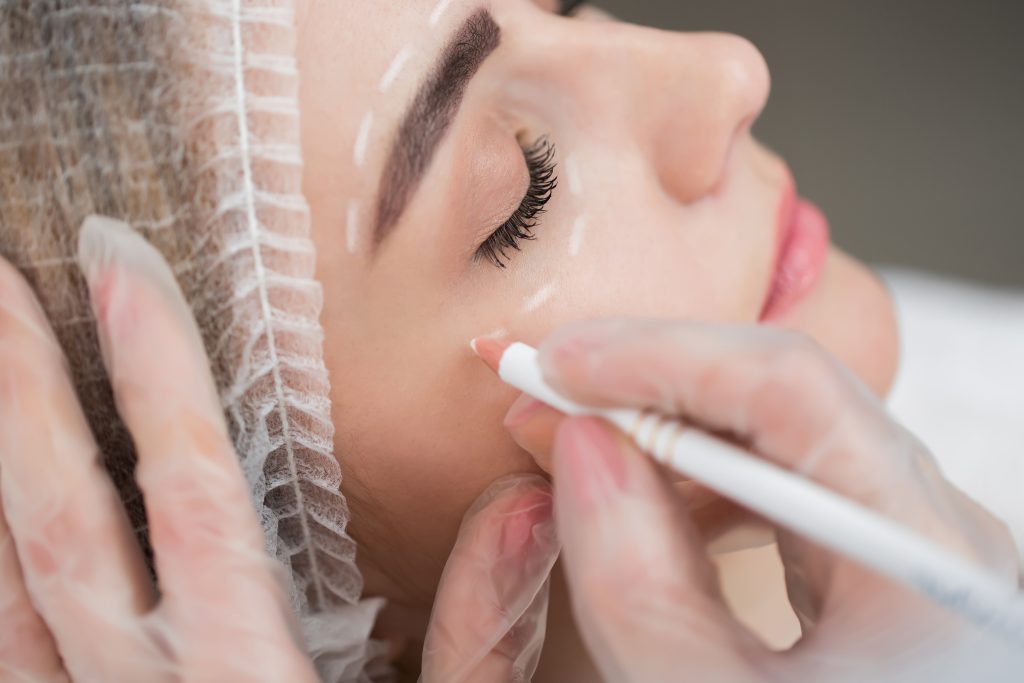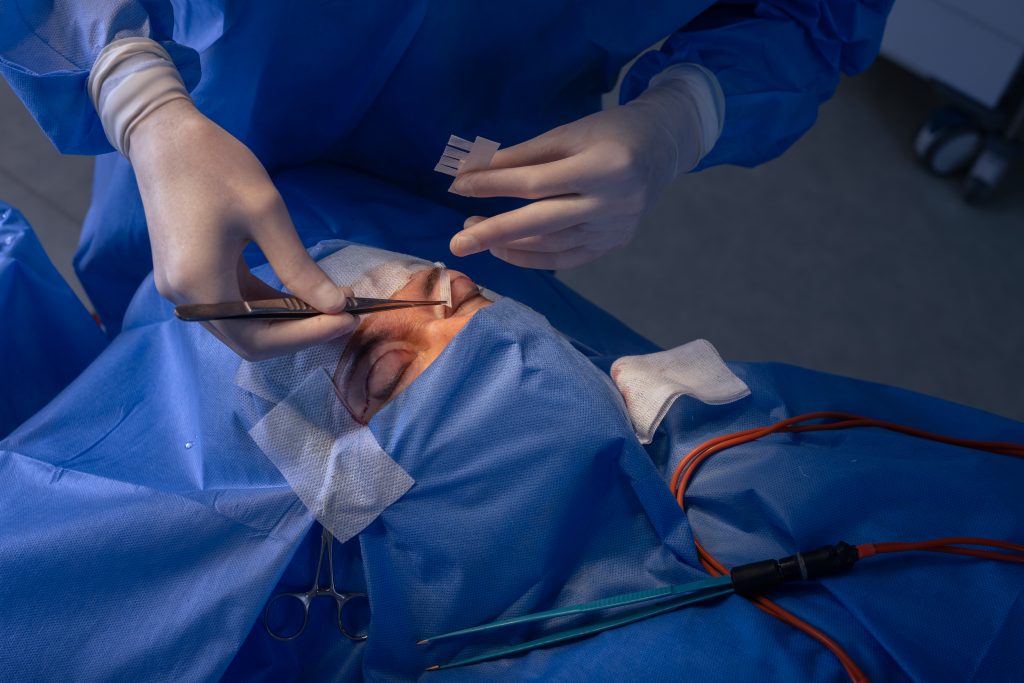Eye Bag Surgery: What You Need to Know?
The procedure to reduce eye bags, also called lower blepharoplasty, is a cosmetic surgery that involves raising the lower eyelid and eliminating excess tissue from the area below the eyes.

Who is a good candidate for eye bag surgery?
People who are contemplating blepharoplasty, whether it’s for their upper or lower eyelids, typically have one or more of the following conditions:
- Persistent eye bags that do not improve even after getting enough sleep.
- Eye bags that are difficult to hide with makeup.
- There are clearly noticeable collections of fat beneath the lower eyelids.
- Wrinkles around the eyes and an abundance of sagging skin beneath the lower eyelids.
- Feeling unhappy with the way their eyes look, believing it makes them appear aged.
What Causes Under-Eye Bags Occur?
Under-eye bags are considered highly bothersome, particularly for women, and can result from either aging or environmental factors. These factors play a significant role in the development of under-eye bags and bruising, both of which are extremely delicate issues for women.
- Progression of age
- Stress and fatigue in daily life
- Hereditary causes
- Medicines used for any reason
- Changes in hormones in the body
- Allergy-related reactions
- Unstable and irregular sleep
- Active or passive smoking
- Heart and kidney disorders
All of the mentioned factors contribute to the development of under-eye bags and bruises. It is important to be mindful of these significant factors in order to avoid having bags under the eyes. Some examples of these factors include disrupted sleep patterns, the use of drugs, and active smoking.
Purpose of Eye Bag Surgery

It is crucial to heed the instructions of your healthcare provider before getting eye bag surgery. This might include quitting smoking or abstaining from it at least a month prior to the procedure. Smoking can disrupt the surface of the eye and lead to dry eyes.
Before the procedure, it is crucial to discuss with your healthcare provider all medications and supplements you are currently taking, whether they are prescription or not. Certain medications, including those available over the counter, have the potential to increase the risk of excessive bleeding or make you more susceptible to ocular surface disease.
Additionally, communicate your desired outcomes for the surgery to your healthcare professional and inquire about reviewing comparative photographs from previous cases. This will aid in evaluating and discussing achievable expectations.
What happens during eye bag surgery?

Right before your eye surgery, the surgeon will make markings on your eyelids. Typically, this procedure is carried out with local anesthesia, which numbs the eye, and may also involve some intravenous sedation to help you stay calm while being awake.
During a lower eyelid surgery, the doctor will create a cut underneath the line of eyelashes. This incision can be made either on the outer side of the eyelid (known as transcutaneous) or on the inner side (known as transconjunctival). Regardless of the chosen location, the incision will eventually heal and become unnoticeable.
Afterwards, the surgeon will eliminate surplus fat and skin that causes the swelling of bags under the eyes. These fat deposits in the eye area, known as orbital fat pads, can occasionally be relocated upwards to provide a fresher and younger look.
If necessary, fat can be extracted from a different part of the body and implanted beneath the eye. This procedure is known as an autologous fat graft. Alternatively, dermal fillers may be utilized.
At long last, the surgeon will seal the cut. After the eye fully recovers, the cut will no longer be noticeable. The surgical procedure typically lasts between one to two hours.
Healing Process After Under Eye Bag Surgery
After undergoing the surgical procedure, one can achieve a vibrant and youthful look in the confinement space. Moreover, this surgery helps restore the original functioning of the eyelids. Certain measures need to be taken for the recovery process following the operation.
- To alleviate edema and swelling in the eyelids, it is recommended to apply a cold compress and elevate your head with a high pillow.
- After the surgery, there is minimal pain. However, if intense pain occurs, it could be a sign of bleeding, and it is recommended to seek medical advice.
- The stitches are taken out entirely in approximately 4 or 5 days.
- The individual can resume their regular activities after one week, although it may take a month or five weeks for the swelling to fully go away.
- It is important to refrain from engaging in activities that involve heavy lifting for a period of two weeks. Additionally, intense sports should be avoided, and it is advisable to steer clear of blood thinners during this time.
- Toileting with too much effort, or coughing and sneezing throughout the day, should be prevented.
By following the doctor’s guidance and taking proper precautions post-surgery, one can quickly attain their desired healthy and attractive appearance.
Long-Term Care
Be sure to refrain from engaging in any physically demanding activities during the initial fortnight. Additionally, it is important to avoid wearing contact lenses or applying cosmetics throughout this two-week duration.
Treatment in Türkiye:
The medical staff of surgical teams, doctors, and consultants at REHABTÜRK can provide the best treatment options and free consultations, striving to stay up-to-date on the latest medical technologies and methods.
